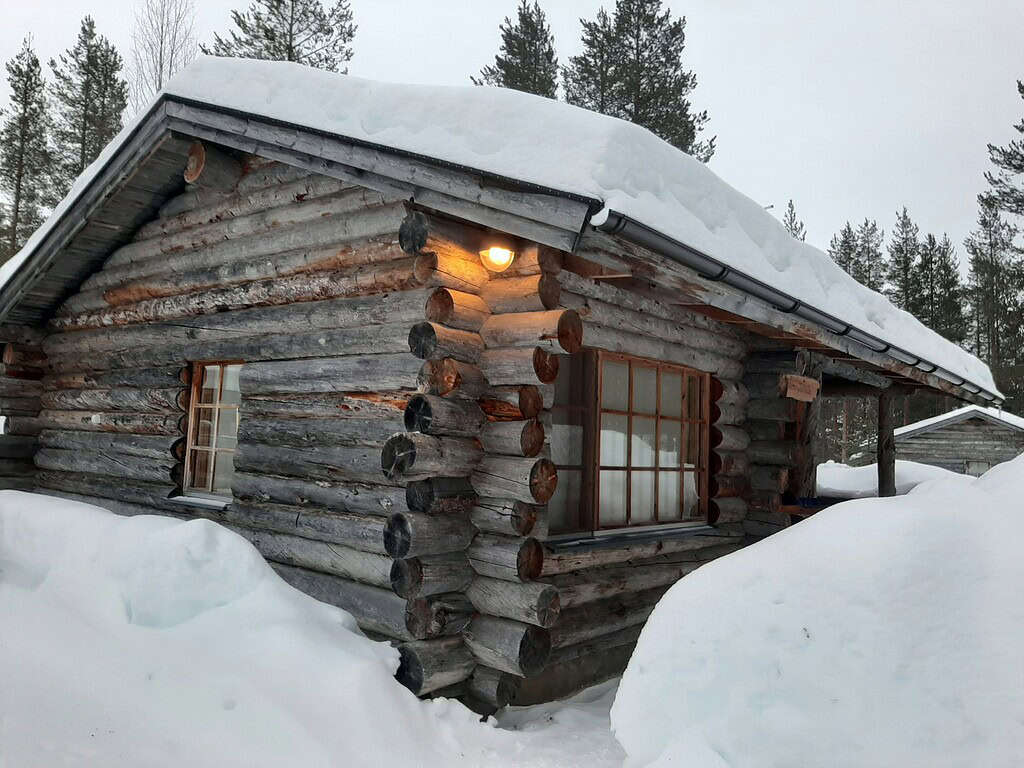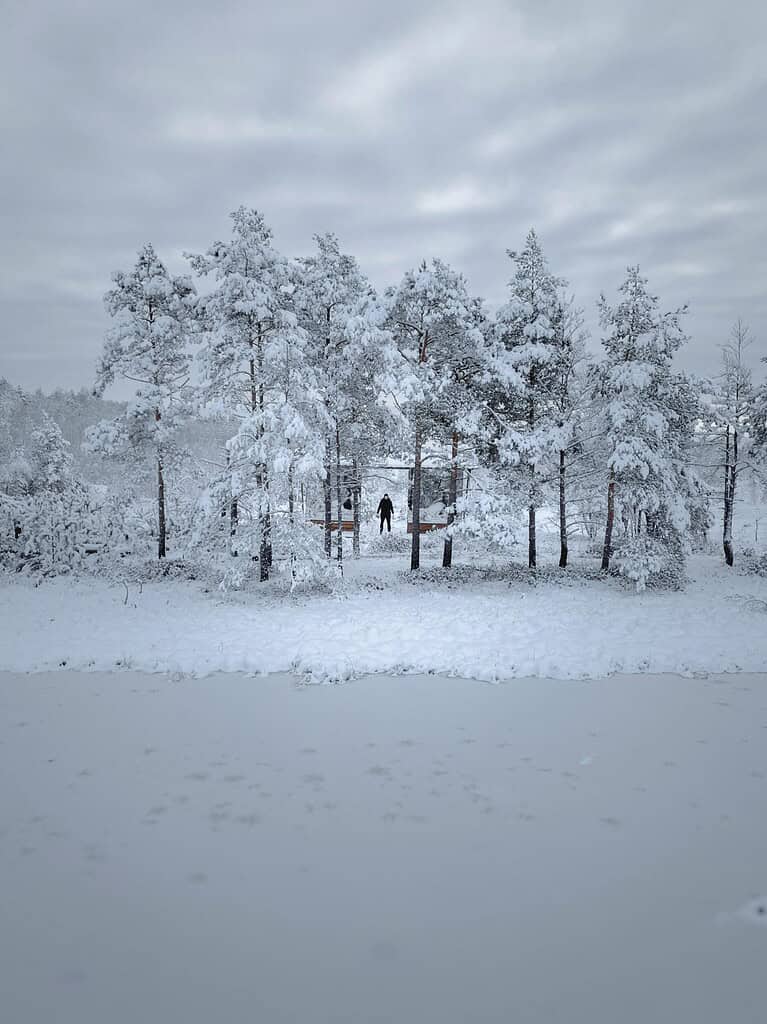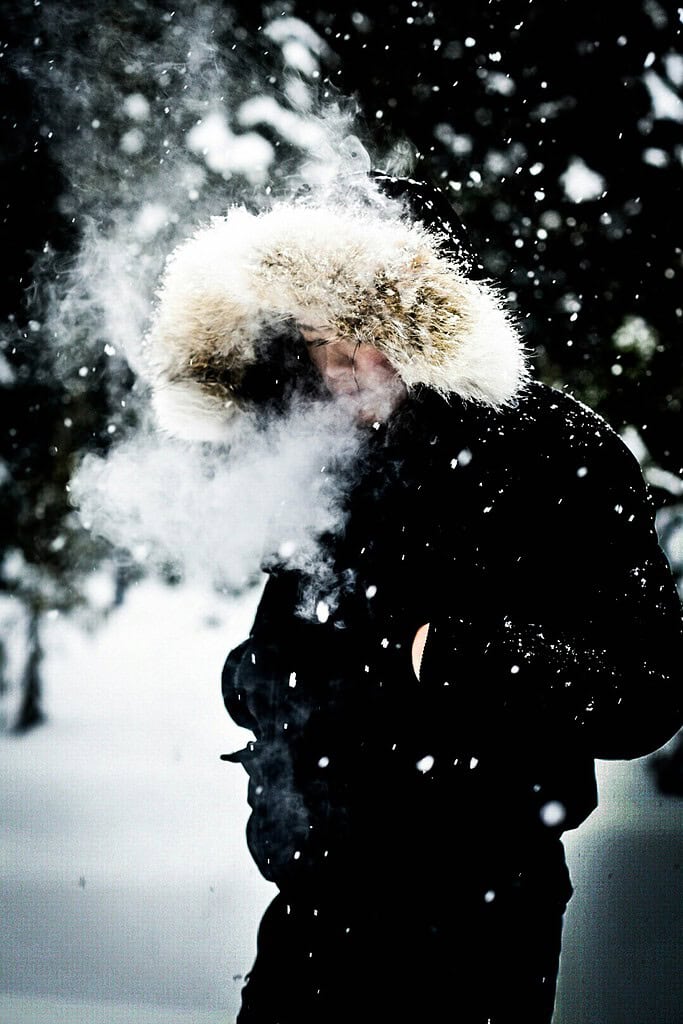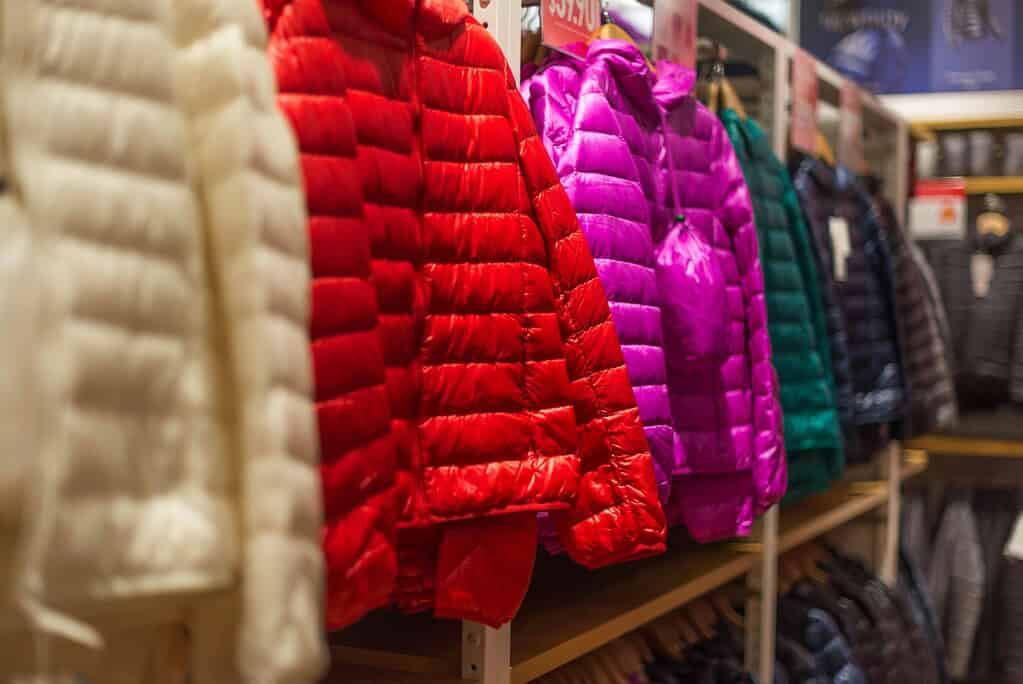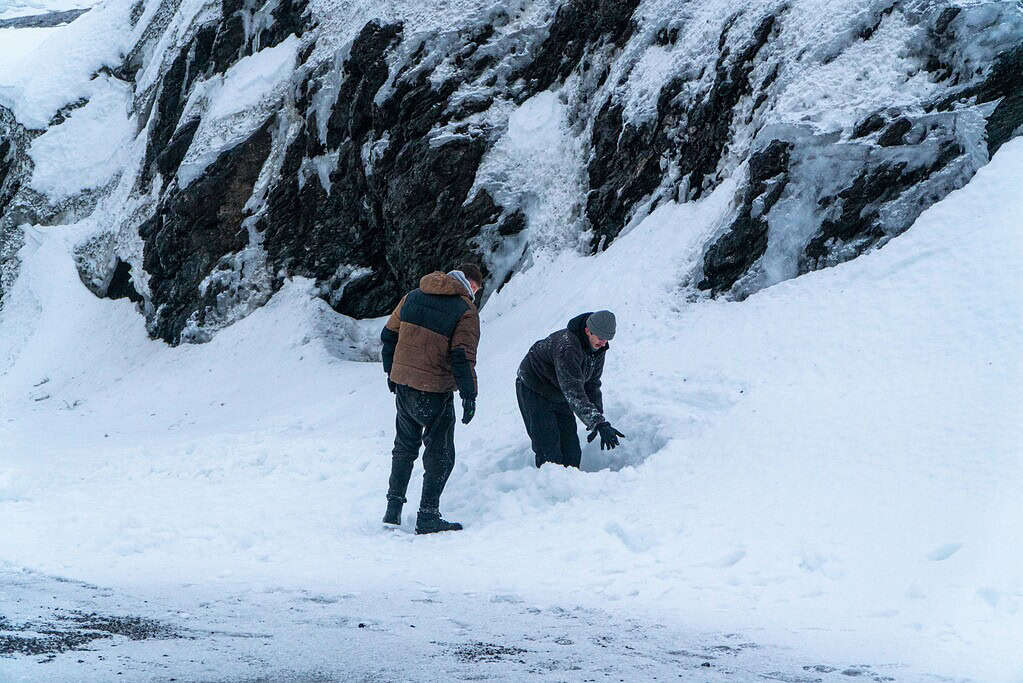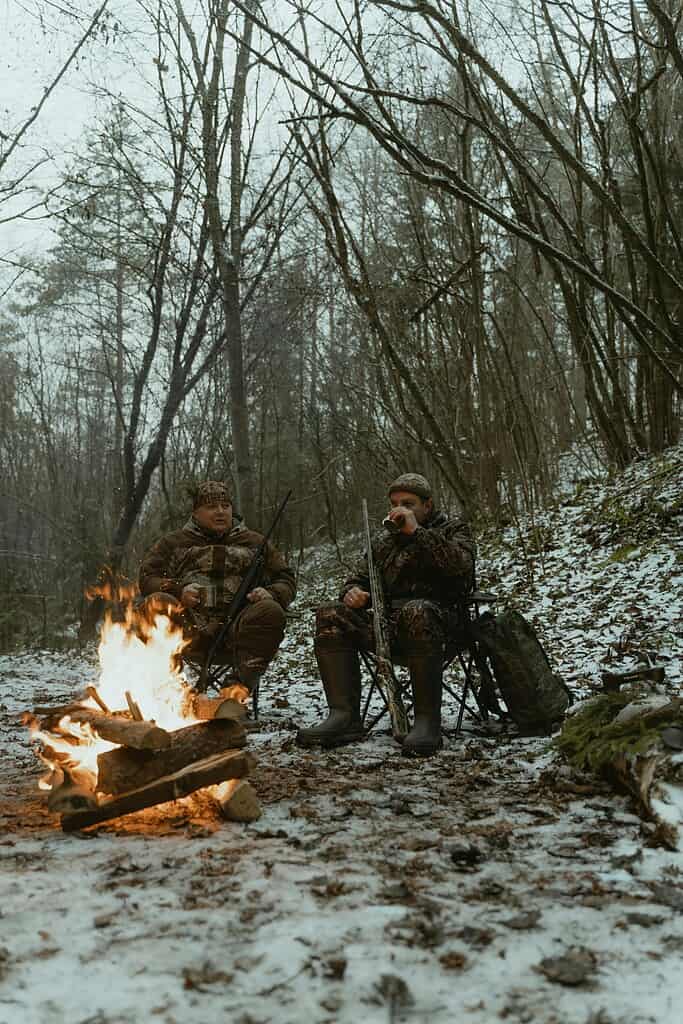Cold weather can turn dangerous fast – especially if you're caught unprepared.
Snow-covered terrain, freezing temperatures, and limited daylight all create risks that require practical survival knowledge.
Whether you’re heading into the backcountry or just want to be ready for emergencies, learning essential winter survival skills can make the difference between life and death.
In this article, I'll cover 11 life-saving techniques (from building shelter and starting a fire to staying hydrated and signaling for help) so you can stay safe when the cold sets in.
The Importance of Winter Survival Skills
Winter environments are unpredictable and unforgiving. Even a short exposure to freezing temperatures can turn dangerous without the right knowledge and preparation.
Knowing what to do (and when to do it) can prevent hypothermia, frostbite, and exhaustion.
These skills give you the ability to protect your body heat, find safe places to rest, and manage your resources efficiently.
They also prepare you to handle emergencies without panic and use your energy wisely.
Whether you're in the wilderness or stranded during a snowstorm closer to home, having the right skills gives you more than a survival chance – it gives you control over the situation.
11 Crucial Winter Survival Skills
Winter conditions demand more than just endurance – they require specific, hands-on knowledge to manage exposure, maintain warmth, and stay alive.
The following 11 skills are not optional; they are essential tools that anyone venturing into cold environments should understand and practice.
1. Shelter Building
In freezing conditions, shelter is your first line of defense against exposure. Without it, your body loses heat rapidly, increasing the risk of hypothermia.
Building a shelter starts with choosing the right location – one that offers protection from wind and is not in a low-lying area where cold air collects.
If you have a tarp or poncho, a loue-style setup can provide fast protection.
Natural windbreaks like rock formations or dense trees are useful, and if snow is available, it opens options like snow caves and quinzees.
A quinzee involves piling up snow into a mound, letting it harden, then hollowing it out carefully to maintain thick insulating walls.
Snow caves can be dug directly into a snowbank, providing excellent insulation if built correctly. The key is to create a small entrance and a sleeping platform higher than the doorway to trap warm air inside.
If snow is unavailable, use branches, moss, and evergreen boughs to construct a lean-to or debris shelter. Always insulate yourself from the ground using dry materials – direct contact with frozen ground can drain body heat quickly.
A well-built shelter not only keeps you warmer but also provides psychological comfort during extended emergencies.
2. Creating Life-Sustaining Heat
Fire is not optional in cold conditions – it’s your heat source, your water purifier, your signal flare, and often your psychological anchor.
But in snowy terrain, starting one takes more thought than just striking a match.
First, never try to build a fire directly on top of snow. Either dig down to the soil or create a raised platform using thick logs or flat stones.
This keeps the fire from sinking and smothering itself as the base melts through. For tinder, your best bet is under evergreen trees, where dry twigs and pine needles stay protected.
Birch bark is especially useful – it lights even when damp. Resin-soaked wood from pine tree knots, often called fatwood, is another dependable choice.
A fire built in a teepee or log cabin shape helps maintain airflow, especially in damp conditions. To keep your fire going, shelter it from wind using natural features or by stacking snow or logs into a windbreak.
And when it comes to ignition, never rely on one method alone. Always carry at least two backups: a ferro rod and waterproof matches are reliable, even in bitter cold.
A windproof lighter helps – but only if it still works when temperatures drop.
3. Navigation in Snow
Snow has a way of making everything unfamiliar. Trails disappear. Landmarks shift or vanish under drifts. Even areas you’ve walked a dozen times can look completely different.
That’s why winter navigation depends on a few key skills you need to master before you head out.
Start with the basics: a map and compass. GPS devices are useful, but batteries fail quickly in freezing weather. You need to know how to read a topographic map, take a bearing, and orient yourself without electronic help.
Natural features can also guide you – tree lines, ridgelines, and river paths often give direction and some level of protection.
If you're moving through deep snow or forested areas, mark your route as you go. Flagging tape tied to branches or bright fabric strips work well, especially in wooded terrain.
You can also notch branches if necessary, but only in true survival situations to avoid damaging the environment. When visibility drops or you enter a whiteout, stop moving.
Pitch a shelter or hunker down rather than risk losing your orientation completely. Wandering blindly in low visibility burns energy, increases your risk of injury, and makes rescue more difficult.
To strengthen your outdoor preparedness, learn a few life-saving wilderness survival hacks that can help you stay calm, navigate safely, and make smart decisions when conditions turn unpredictable.
4. Hypothermia and Frostbite Prevention
In winter survival, exposure is the silent threat that creeps in unnoticed until it becomes dangerous. Hypothermia begins when your body starts losing heat faster than it can produce it.
Frostbite, on the other hand, sets in when skin and underlying tissue freeze – most often on fingers, toes, ears, and nose.
The key to prevention is staying dry and managing your body heat. Wet clothing accelerates heat loss, so any time clothing gets damp (whether from snow, sweat, or melting ice) it needs to be removed and replaced immediately. This is where proper layering makes a difference.
Your base layer should wick moisture off your skin, the mid-layer should trap warmth, and the outer shell should block wind and moisture.
If you notice signs of hypothermia – such as uncontrollable shivering, slurred speech, confusion, or slow movements – it’s time to act.
Get to shelter, remove wet clothing, and warm the person’s core using dry layers, warm water bottles (wrapped to avoid direct skin contact), or shared body heat.
With frostbite, avoid rubbing or direct heat. Instead, gradually warm the area using lukewarm water if available and keep it insulated until help arrives.
5. Staying Hydrated Without Getting Cold
In cold weather, dehydration sneaks up on you.
You may not feel thirsty, but your body continues to lose moisture through respiration and sweat. Staying hydrated is just as important as staying warm – but in winter, it has to be done carefully.
Never eat snow directly. It pulls heat from your core to melt in your stomach, which can push your body further toward hypothermia. Always melt snow first, using your fire or camp stove.
If you don’t have a container, you can fill a metal cup with snow in stages – adding more as it melts to prevent burning the container or damaging it.
Once melted, don’t assume it’s safe to drink. Snow can contain bacteria or pollutants, especially if it’s collected near trees or animal activity.
Boil it for at least one full minute, or use purification tablets or a filter designed to work in freezing temperatures.
Be aware that most water filters can freeze and crack if left in the cold, so keep them in an inside pocket when not in use.
Storing water is another challenge. In freezing conditions, even insulated bottles can turn solid overnight.
Store your water container upside down, since ice forms from the top down, and keep it wrapped in clothing or inside your sleeping bag when possible.
6. Food Preservation and Energy Maintenance
Cold weather burns energy fast. Just staying warm can double your calorie needs, even if you're not moving much.
This means your body is constantly using fuel, and if that fuel runs low, you’ll feel the effects — fatigue, poor decision-making, and ultimately, greater risk of exposure-related conditions.
The food you carry matters. You need calorie-dense options that don’t freeze solid and don’t require much prep. Dried fruits, nuts, hard cheeses, nut butters, and high-fat energy bars are ideal. Choose foods you can eat on the move or in short breaks, without needing to cook.
Equally important is how you manage your energy. In survival conditions, unnecessary movement wastes both calories and body heat. That means you should focus only on essential tasks (shelter, fire, water, and signaling) and avoid pacing or wandering.
If you need to gather wood or move through snow, do it in short, deliberate bursts, followed by rest. This kind of energy budgeting helps you last longer and reduces your risk of mistakes brought on by fatigue or cold stress.
7. Emergency Signaling
In a winter survival situation, signaling for rescue is essential. Cold weather shortens your margin for error, so the sooner you're found, the better your chances.
Relying solely on being stumbled upon isn’t a strategy. You need to actively create visibility and sound to alert rescuers.
Your voice doesn't carry far in snow-covered terrain, especially in high winds or during storms.
A whistle is far more effective. It requires less energy to use and can be heard from a greater distance. Three short blasts, repeated regularly, is the recognized distress signal.
Visual signals are equally important. A signal mirror can reflect sunlight for miles if used correctly – aiming the reflection toward aircraft or open areas. At night, a fire becomes your best tool.
Build one in an open space and feed it green branches to create thick, white smoke. If you have enough resources, building three fires in a triangle is a traditional distress signal.
Ground-to-air signals like “SOS” or a large “X” made from rocks, branches, or even stamped into snow can be seen from the air.
Each element of the message should be at least 10 feet long to be visible. In heavy snow, use dark materials that contrast sharply with the white background.
8. Clothing and Layering Techniques
Dressing properly for winter isn’t about piling on as many clothes as possible- it’s about using the right materials in the right order to control heat and moisture.
The goal is to stay warm without overheating or sweating, since sweat can soak your layers and lead to rapid cooling once you stop moving.
Start with a base layer made from synthetic fabric or merino wool. This layer should pull moisture away from your skin.
Avoid cotton – it holds moisture and loses insulating power when wet. Over that, wear a mid-layer like fleece, wool, or down.
This is your main insulation and should trap body heat without being bulky. The outer layer – your shell – needs to be windproof and waterproof but also breathable to allow moisture to escape.
Accessories matter just as much. A wool or synthetic hat helps retain body heat, while a scarf or neck gaiter protects vulnerable skin.
Gloves should be insulated and waterproof, and it's best to have a thinner liner underneath for dexterity. For footwear, insulated, waterproof boots with wool socks are ideal. Carry extra socks and rotate them if they become damp from snow or sweat.
Good layering allows you to adjust throughout the day. If you're working hard, remove a layer to avoid sweating. When you stop to rest, put it back on before you start to feel cold.
9. Physical Fitness and Cold-Weather Acclimatization
Winter survival tasks require serious physical effort.
Building a snow shelter, chopping firewood, or walking through deep snow burns more calories and taxes your muscles more than doing the same tasks in mild weather.
That’s why physical preparation plays a major role in survival.
Good cardiovascular fitness improves your stamina, which helps when you’re hiking with gear or collecting firewood over long distances.
Strength in your legs and core improves your ability to move through snow, haul supplies, or dig out shelter spaces. Even short bursts of activity, like lighting a fire in freezing wind, demand control and coordination.
Cold-weather acclimatization is another often-overlooked factor. If you expose your body to cooler temperatures gradually over time, it adapts by improving circulation and building tolerance to cold.
Spending time outdoors in early winter, taking cold showers, or sleeping in cool environments before a trip can condition your body to handle the stress of the cold more effectively.
This preparation reduces your chances of injury or exhaustion in a real survival situation.
10. Mental Resilience and Prioritizing Decision-Making
In any survival situation, the mind often fails before the body does. Panic, confusion, or emotional fatigue can lead to poor decisions that make a bad situation worse. In winter, the stakes are higher.
Shorter days, colder nights, and the constant stress of exposure can wear down even well-prepared individuals.
Building mental resilience starts long before you're in the field. Practice maintaining a clear mind under stress through simple, repeatable methods – like controlled breathing, focused task prioritization, and rehearsing basic decision-making steps.
Mental strength also grows from connection and preparedness. Surrounding yourself with like-minded individuals who share your goals can make a difference in how you respond under pressure.
Learn how to build a strong prepper survival network so you can exchange knowledge, share strategies, and stay mentally grounded when it counts.
In cold conditions, decision-making should always start with assessing shelter, fire, water, and signaling. Avoid wasting energy on non-essential tasks or second-guessing yourself repeatedly. You’re working with limited time and resources – clarity is survival.
11. Packing a Winter Survival Kit
Preparation doesn’t start when you’re out in the cold – it starts with what you pack.
Your survival kit is your backup when conditions turn against you. Every item should have a purpose and work reliably in subzero conditions.
Just like your essential survival gear every prepper needs, each tool in your winter kit should be dependable, compact, and capable of performing under pressure.
Winter survival kit essentials:
- Ferro rod
- Waterproof matches
- Windproof lighter
- Compact stove or solid fuel blocks
- Bivy sack or emergency tarp with grommets
- Baseplate compass
- Waterproof topographic map
- Whistle
- Signal mirror
- High-visibility tape or bright fabric
- Emergency thermal blanket
- Chemical hand/foot warmers
- Sterile gauze
- High-fat, calorie-dense snacks (e.g., nuts, energy bars, powdered soup)
- Water purification tablets or cold-weather-compatible filter
- Metal cup for melting snow
- Insulated water bottle
- Fixed-blade knife
- Multi-tool
- Headlamp
- Spare lithium batteries (stored inside clothing)
- Dry wool or synthetic socks
- Glove liners
- Spare insulating mid-layer (packed dry)
When and Where to Practice These Skills
Learning these skills is only useful if you've tried them before you need them.
The best time to practice winter survival techniques is during short, controlled outings—like cold-weather day hikes or overnight trips close to home.
Local trails after a snowfall, forest preserves, or private wooded land can offer the right conditions without placing you at serious risk.
Use these trips to test your clothing, set up a tarp in the snow, start a fire with your gear, or practice boiling snow for water.
If you plan to use a snow cave or quinzee, build one in your backyard or a safe wilderness area where you can experiment with structure and insulation.
Winter survival courses are also available in many regions and offer hands-on instruction in a safe, supervised setting.
For year-round preparedness, check out practical life hacks for everyday emergencies to build confidence in handling unexpected challenges.
Common Mistakes to Avoid in Winter Survival
Most winter survival failures come down to small oversights that escalate. One common mistake is underestimating wind and moisture.
Even light snowfall combined with wind can strip body heat fast, especially if your clothing layers aren’t balanced properly.
Another frequent issue is relying entirely on electronic devices for navigation. Batteries fail quickly in cold weather, and screens are hard to use with gloves or in blowing snow.
Overexertion is another danger. Moving too hard or fast while dressed heavily can lead to sweating, followed by chilling. It’s also common for people to focus on comfort items and forget essentials – like extra dry socks, insulation for sleeping, or a second fire-starting method.
Lastly, failing to test your gear before you need it is a critical oversight. A new stove, fire starter, or sleeping system should always be tested in real conditions before you trust it with your safety.
Put These Winter Survival Skills Into Practice Before You Need Them!
Knowing what to do in a winter emergency is only part of the equation – what matters most is whether you’ve actually tried these skills in real conditions.
Don’t wait for a survival scenario to figure things out. Start now. Set up your shelter in the backyard after a snowstorm.
Try melting and purifying snow on a day hike. Test your fire starter in windy conditions. Pack and repack your kit until you know it by heart.
Real confidence comes from repetition. The more time you spend practicing these winter survival skills, the more likely you are to stay calm, act quickly, and make the right choices when the cold sets in for real.
What skill have you already practiced, and which one do you need to work on next?
Comment down below and share your experience or questions!
Frequently Asked Questions
How do I keep batteries from dying in freezing temperatures?
Store all batteries and battery-powered devices—like headlamps, GPS units, or power banks—inside your inner pockets, close to your body heat. Use lithium batteries, as they handle cold far better than alkaline.
What’s the best way to dry wet clothes in winter?
If you have a fire, hang clothes close enough to dry slowly without risking burns. Inside a shelter, you can place damp items between your outer layer and insulating layers, using body heat to evaporate moisture over time.
Can I safely sleep in a vehicle during a snowstorm?
Yes, but you must crack a window slightly for ventilation and regularly check that your tailpipe is clear of snow to prevent carbon monoxide buildup. Insulate the windows with emergency blankets or clothing to retain heat.
What’s the safest way to walk on ice or snow without slipping?
Take small, deliberate steps with knees slightly bent, and keep your center of gravity low. If available, wear traction aids like microspikes or crampons. Trekking poles also help with balance on uneven terrain.
How do I prevent my water bottle from freezing while I sleep?
Store it upside down (ice forms from the top), wrap it in clothing, and keep it inside your sleeping bag. If possible, use insulated containers made for cold weather and top them off with warm (not boiling) water before bed.

